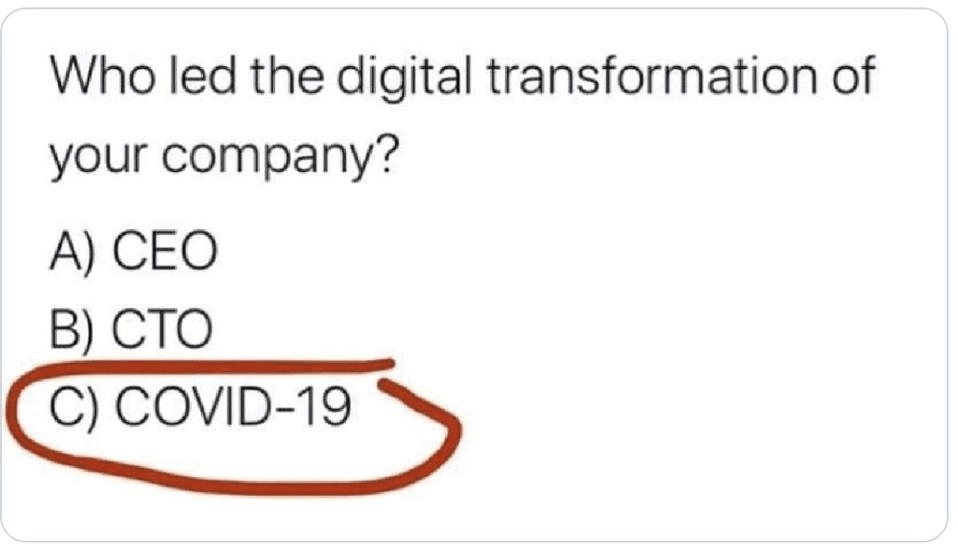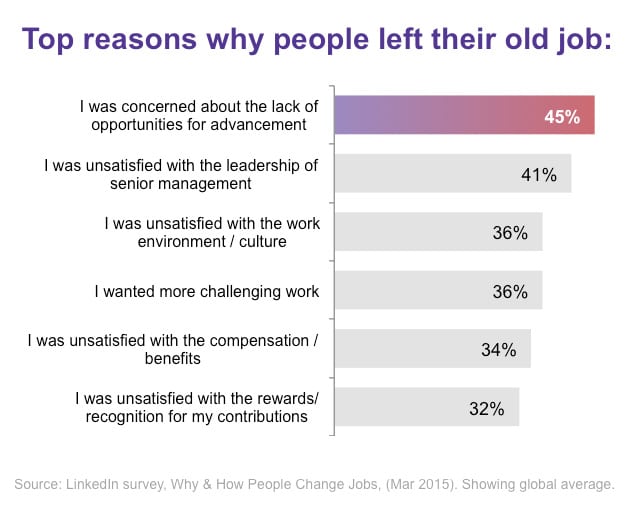The technological revolution has accelerated transformation and led to the creation of digital jobs. Consequently, the nature of corporate culture changes and new approaches to building communication and employee engagement are required. The issue can be addressed by using various methods of building a dialogue and innovative tools for creating positive experiences inside the company. These solutions should be carefully considered in order to create attractive jobs.
This article will explain the following:
- How has the digital age influenced the corporate culture and work organization?
- How should companies change their approach to work and employees during the technological revolution?
- What solutions should be introduced to create an attractive workplace?
- What tools help build employee engagement?
What has changed in the digital era?
The digital age is a stage in the development of societies when the economy is based on IT, and the society functions due to a very fast and increasingly uncontrolled flow of information. The digital revolution has influenced human life and irreversibly connected with virtually every aspect of it – including one of the basic areas of human activity – work. The technological transformation – significantly accelerated by the pandemic – has a particularly influential impact on the workplace as it resulted in the creation of digital jobs in numerous companies.

What changes? Everything, though not immediately. As last year’s events suggest, the fluctuation in the quality of services or the efficiency of employees should not be big. However, the team, its work culture and work organization are influenced significantly. This simply means that the company is changing, and wise managers should ensure that their business strategy takes this transformation into account.
The main points of concern are as follows:
- employee satisfaction and commitment,
- social ties in the team,
- development needs,
- appreciating work and behavior.
The above-mentioned aspects are essential because they are directly related to retention or rotation of staff. To put it more figuratively, when 100% of work is done remotely, an employee who performs specific tasks at a desk in his or her apartment every day and is deprived of prospects or detached from the team and the employer has no reason not to do the same job for someone else for a higher salary.

Why is dialogue with employees so important?
Human resource issues can be frustrating, especially because, as HR experts often say, “There is no golden rule that will work for every business.” It all depends on the initial situation, which needs to be studied carefully. Only this process allows companies to create effective, tailor-made solutions.
In dynamic reality, often referred to as the VUCA world, only constant communication with employees allows management to keep track of the situation in the company. What often escapes the attention of managers is that the staff also lives in a feeling of constant change and uncertainty. Therefore, in order for the communication not to be futile, a two-way dialogue between the management and the staff needs to be created. Consequently, areas requiring attention and commitment can easily be identified and ‘communication’ isn’t just an empty word.

How to engage employees digitally
Being aware of what the staff needs in the digital age (the transformation of the organization), what individual aspects need to be focused on (employee commitment and satisfaction, social ties, development, appreciation) and what the means to study corporate needs are (constant communication), it’s time to answer the following question: what methods should be used to improve communication?
There are many of them, of course, but four key solutions should be mentioned here, as they additionally facilitate analyzing and improving employee experience. They are as follows:
Regular feedback
Building a culture of feedback exchange is a basic tool for creating a two-way dialogue with the staff. This is an opportunity to reward desired and eliminate unwanted behavior. It also satisfies the employees’ need for safety and appreciation by signaling job satisfaction. Regular conversations also help to activate employees. The culture of feedback opens them to expressing their opinions, signaling their well-being, or sharing challenges and problems they have to face.
Employee satisfaction survey
A satisfaction survey is a large project due to the multitude of research areas and the size of the obtained data (appropriate methodological preparation would certainly be useful). If conducted correctly, it allows key areas in the company to be examined – employee morale, communication, team cooperation, atmosphere, work organization, relations with superiors, professional development, and employee satisfaction. At the same time, it is a justified solution only if the management board is open to listening to the voices of the respondents and to applying changes. Such an attitude builds in employees’ a sense of influence over the company they work for, which directly translates to their attachment to the workplace. For many of them, it is a confirmation of the care and respect of their managers.
Staff development
There are as many approaches to employee development as there are companies. One thing is certain- it is an area which shouldn’t be ignored. The range of solutions in the matter is wide – from building career path matrices in the company, development and up-skill planning and – through training budgets – mentoring and coaching programs, and even company universities.
Each of these tools should, of course, be adapted to the size of the company, its business goals and team capabilities. On the other hand, learning and development are some of the basic employee motivators which build a sense of meaning in their work.
Remote integration
As R. Bregman convinces us in the book “Humankind: A Hopeful History”, creating teams which are brilliant, loyal, committed, supportive, ready to sacrifice (and even give their lives in the case of the military) is possible due to building friendships. This is extremely valuable information that should motivate companies to care for relationships even more, even though it is a cost which seemingly does not translate into business. It could, however, result in identifying a mistake, which lies outside the scope of responsibility of a given employee, but is done for the well-being of the whole team.
Tools that influence employee engagement
Obviously, Apart from being a threat, digitization also helps companies in many ways. Digital technologies meet the needs of employers with a number of tools facilitating the improvement of employee engagement. There is a wide selection to choose from. An overview of the key categories of HR tools are listed below.
Employee experience management platforms and well-being systems
Employee experience platforms can be used to give kudos and appreciation within the organization as well as to reward employees. These platforms can engage individuals as well as entire teams and are often (but not necessarily) combined with tools for gamification, joint activities and wellness.
Learning Management Systems
Learning Management Systems (LMS) is a category of applications supporting remote learning and employee development. They help to manage training courses and competencies, track individual skill progress, as well as identify individual or group areas requiring improvement.
Benefit systems and others
Cafeteria systems, ordering assistants for employees, or applications for participatory budgets for employee development are examples of classic benefit systems in business. Additional and less popular solutions can also be mentioned here, for example systems for simple problem reporting and removal, tools for sharing parking spaces, car-sharing for commuting, or ordering lunch to the office.
Why are the discussed tools and solutions worth investing in? To quote a popular phrase and truism – people make up the company. It is easy to support this claim with evidence, especially when one takes into account the costs of employee rotation and onboarding.
Being open to dialogue with employees and providing an engaging workplace has ceased to be a choice and has become a mandatory aspect of creating a strong organization. Now, all that is left to do is to talk to the team and determine which of the above-mentioned areas should be prioritized, and then select the appropriate methods and tools which will allow the company to successfully achieve its HR goals.










